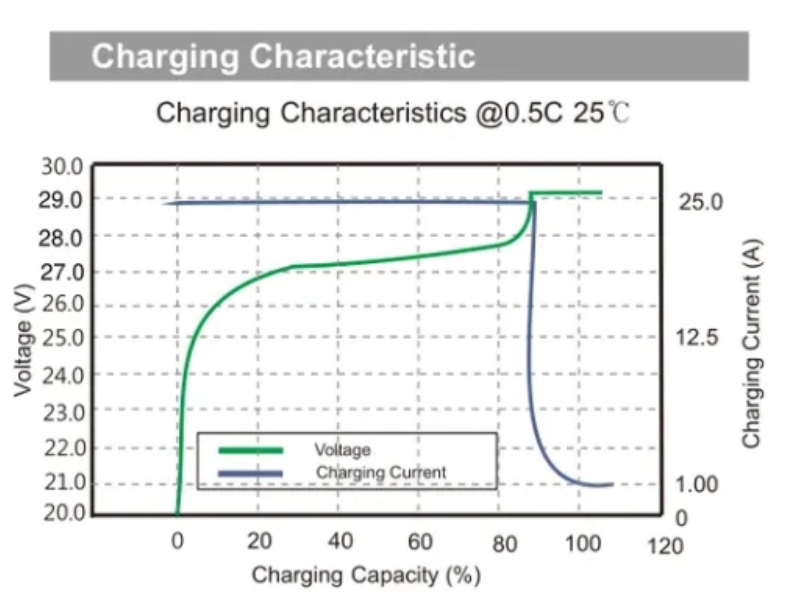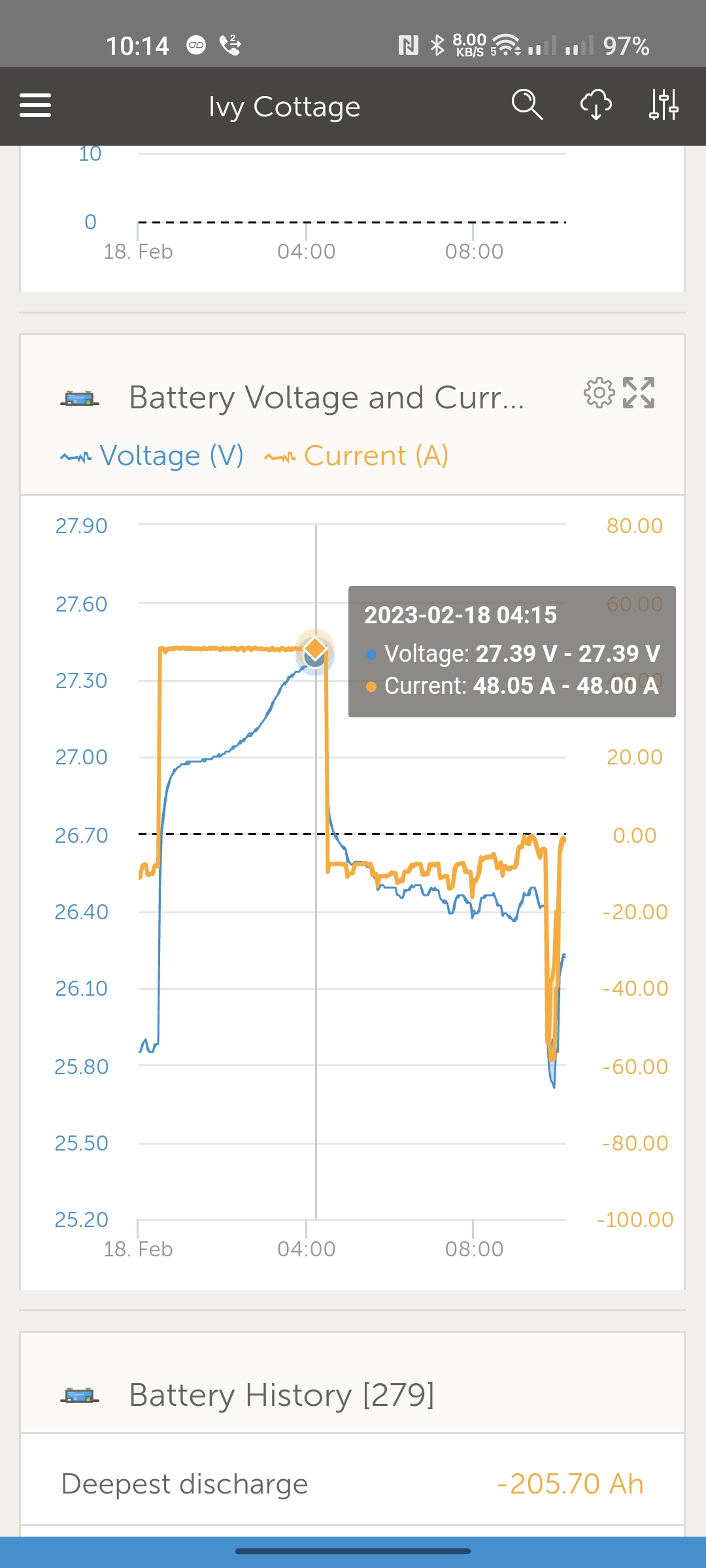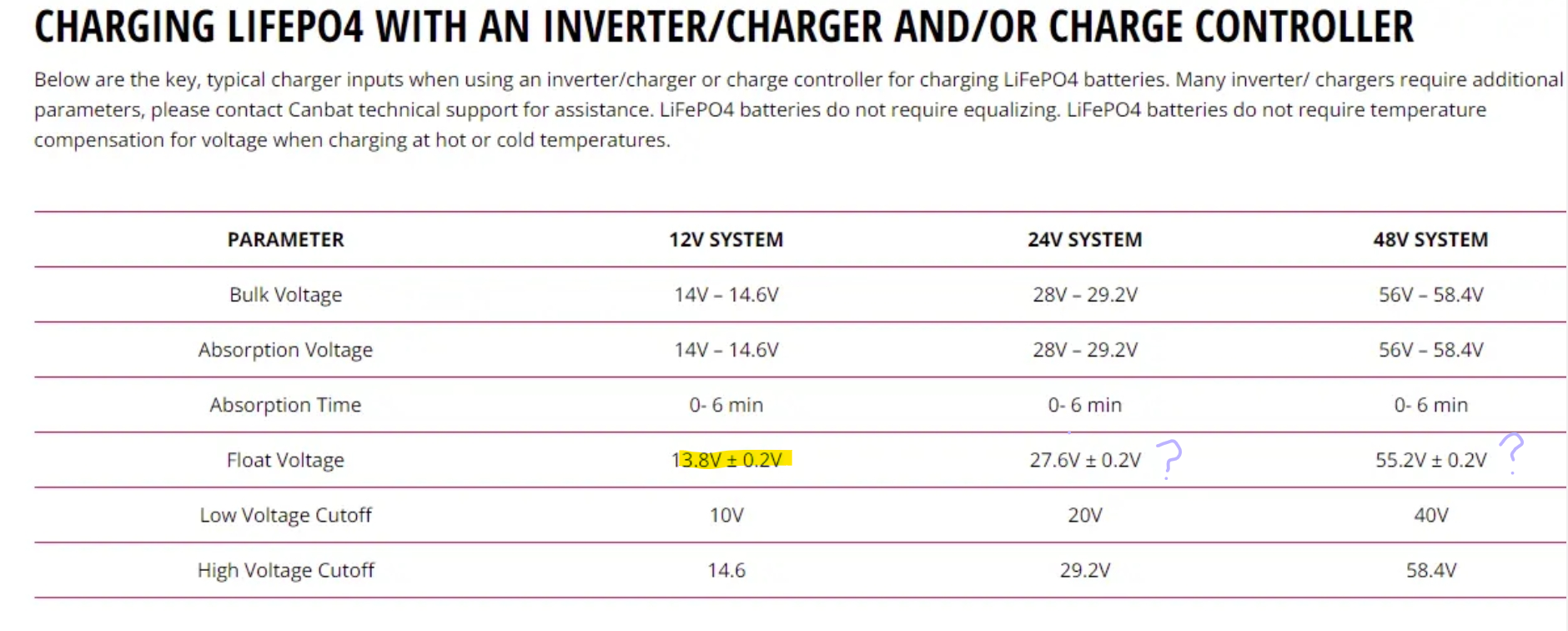Hi all,
Grid parallel ESS
24V system
SmartShunt 500A
2x MPPT 100/30
Multiplus ii
Cerbo Gx
4x UltraMax LiFePo4 102Ah 24V "drop in" batteries with internal BMS in parallel in a busbar configuration (identical cable lengths)
I have 4x UltraMax LiFePo4 102Ah 24V "drop in" batteries with internal BMS (not connected/BMS compatible with Victron). These are in a parallel configuration for 408Ah. The system appears to be working well, with the batteries charging to 100% SoC according to the SmartShunt, and this 100% charge being reflected on all of the batteries internal BMS's (Bluetooth enabled) also. So the Victron SoC tallies up with the internal BMS SoC perfectly. This is good.
However, these batteries call for a 28.8V bulk/absorption charge voltage, yet they are reaching 100% charge according to their internal BMS's (and the SmartShunt) at a much lower voltage, around 27.6V. The MPPT's and MultiPlus ii are configured for bulk/absorption 28.8V and float 27.6V. I have noticed that the chargers are only ever in bulk mode, and never seen to transition to absorption or float, either by charging from the MultiPlus ii or the MPPT's.
Please find below attached screenshots of my MPPT's charger settings, MP ii settings and SmartShunt settings and also the specification sheets for the batteries.
MPPT charger settings page 1 of 2 Screenshot_2023-02-16-18-41-00-70_30b6efbd53acd6f273baafa7ca03da38.jpg
MPPT charger settings page 2 of 2 Screenshot_2023-02-16-18-41-05-60_30b6efbd53acd6f273baafa7ca03da38.jpg
SmartShunt settings Screenshot_2023-02-17-19-12-10-73_30b6efbd53acd6f273baafa7ca03da38.jpg
MultiPlus ii settings General tab MultiPlus ii General tab.png
MultiPlus ii settings Battery tab MultiPlus ii Charger tab.png
Battery specification sheet 1 of 2 Screenshot_2023-02-16-18-46-49-50_260528048de7f2f358f0056f785be619.jpg
Battery specification sheet 2 of 2 Screenshot_2023-02-16-18-46-55-72_260528048de7f2f358f0056f785be619.jpg
Battery manufacturer recommended charging parameters Screenshot_2023-02-16-18-47-17-72_260528048de7f2f358f0056f785be619.jpg
Please can someone help explain why this is happening, and if I should be concerned?
Many thanks.




